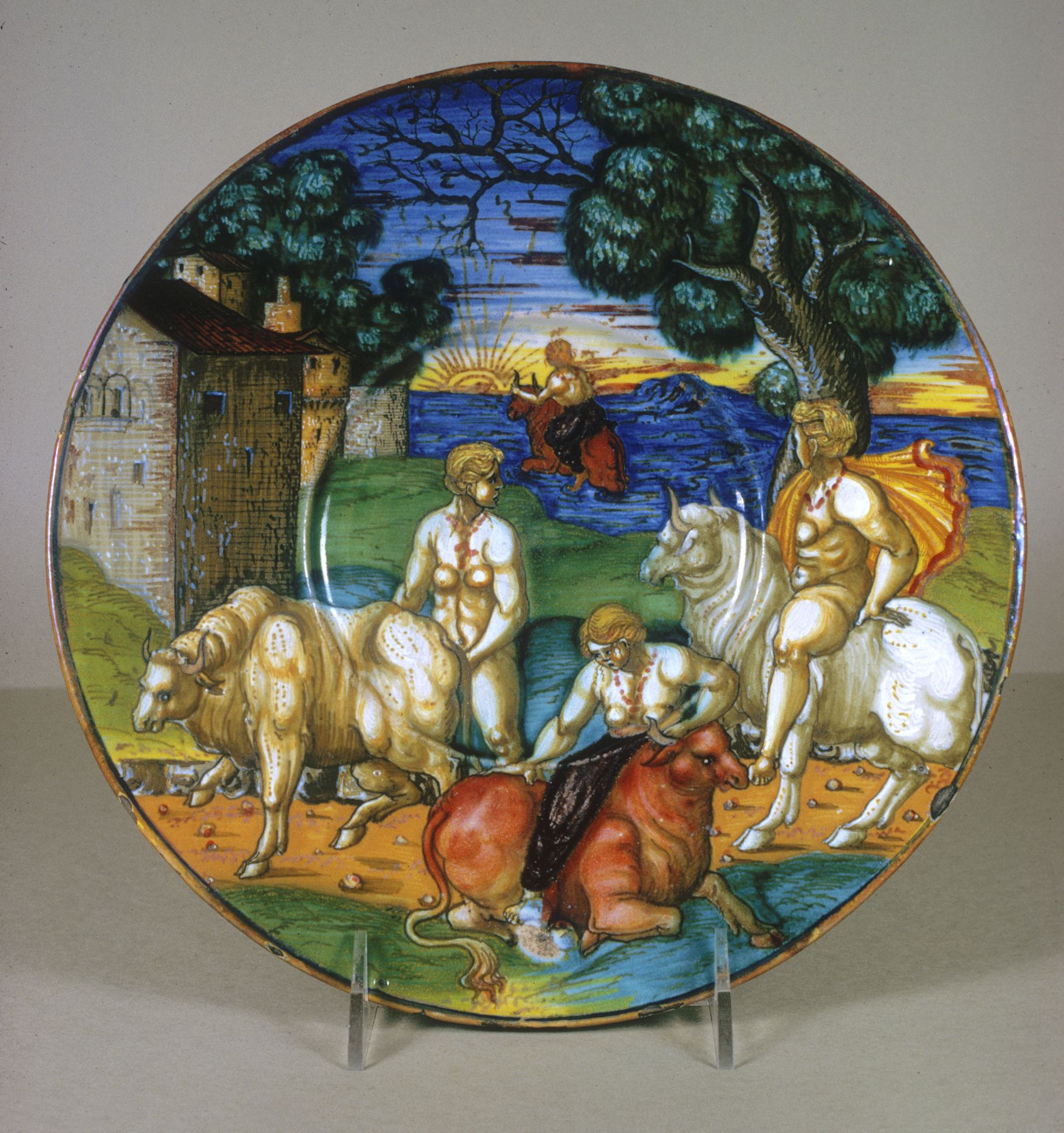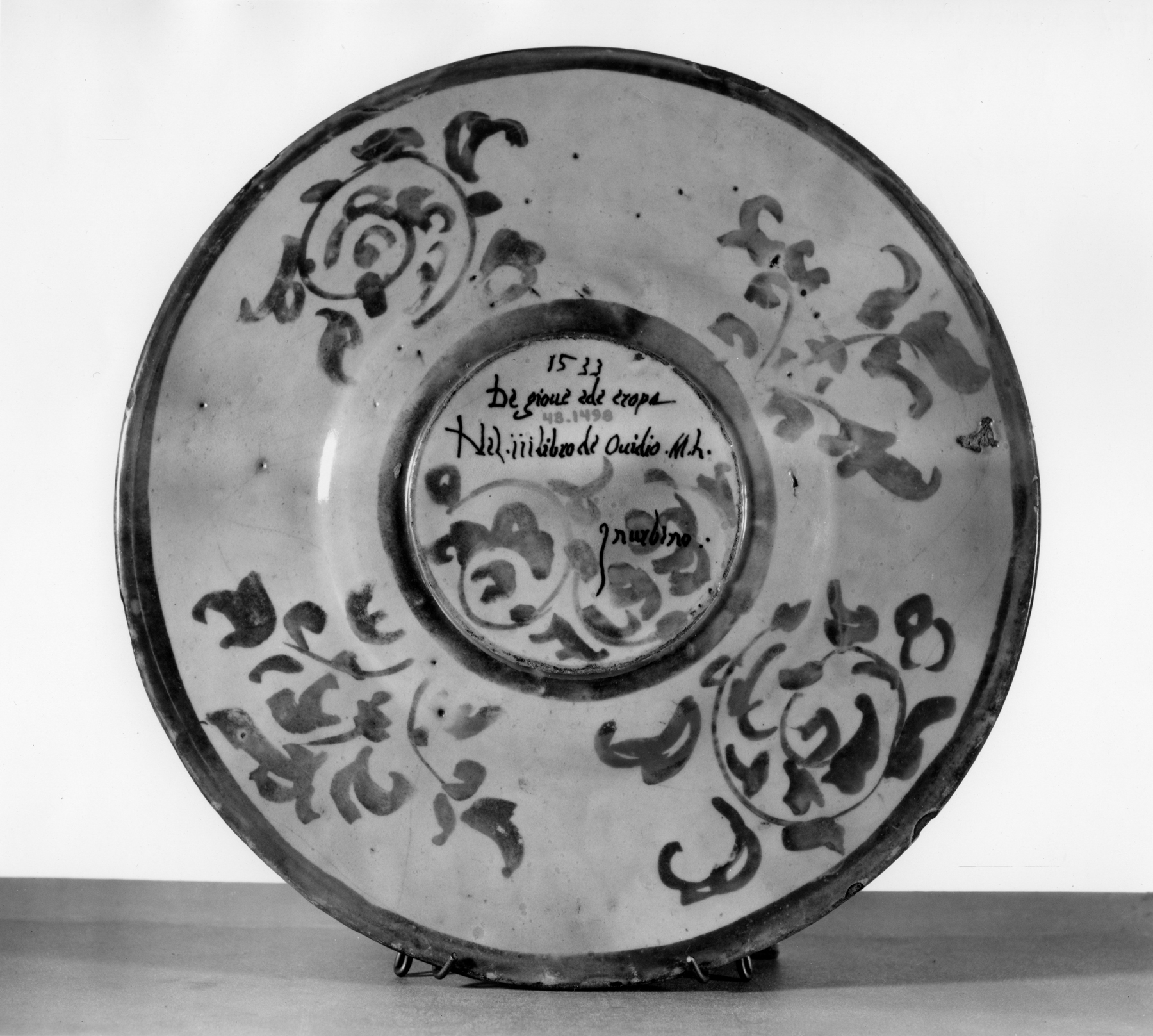Plate with the Abduction of Europa
(Renaissance Europe )
This “istoriato” (story-telling) plate shows Jupiter, king of the gods and here disguised as a bull, kidnapping the young maiden Europa and taking her across the sea. In the foreground, Europa, not realizing that the amiable bull with which she and her friends have been playing is a lascivious god, mounts the back of the bull. He wisks her across the sea (in the rear) to Crete, where, now as Jupiter, the god will make love to her. Though this story is in the Roman poet Ovid’s (43 BCE—17CE) Metamorphoses Book II (8 AD), an inscription painted on the plate’s reverse incorrectly indicates that it was taken from Book III: “1533 / De gioue ede eropa / Nel • iii libro de Ouidio •M•h• / in urbino.” Moreover, while Ovid describes Jupiter as a white bull, here Europa rides a brown beast across the water. The composition’s divergence from the story in the Metamorphoses reveals that maiolica painters were not always accurate in either depicting or sourcing popular mythological subjects. The back is stained with green and decorated with lustered spiral leaf scrolls. This plate was produced by Giulio da Urbino, a maiolica painter who was born in Urbino and worked in different Italian cities throughout his career. For more works by Giulio da Urbino, click on his name in the creator field. For more on istoriato ware, see 48.1487; for information on ‘maiolica’ in general, see 48.1336.
Inscription
Provenance
Provenance (from the French provenir, 'to come from/forth') is the chronology of the ownership, custody, or location of a historical object. Learn more about provenance at the Walters.
H. Wencke Collection, Hamburg [date and mode of acquisition unknown] (?); Seligmann [date and mode of acquisition unknown]; Henry Walters, Baltimore, May 7, 1908, by purchase; Walters Art Museum, 1931, by bequest.
Geographies
Italy, Urbino (Place of Origin)
Measurements
1 3/16 x 10 3/8 in. (3 x 26.3 cm)
Credit Line
Acquired by Henry Walters
Location in Museum
Accession Number
In libraries, galleries, museums, and archives, an accession number is a unique identifier assigned to each object in the collection.
In libraries, galleries, museums, and archives, an accession number is a unique identifier assigned to each object in the collection.
48.1498




